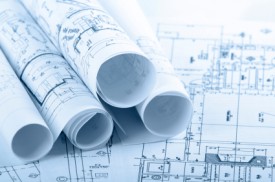
You are looking to make changes to your school district’s technology infrastructure or offerings. You have a plan for what you would like. But is it a blueprint?
Many times our school systems are put in the very difficult position of “expanding technology” or “finding online solutions” because funding becomes available on short notice or parents of students are putting pressure on the school system to buy more technology. We get excited to go out and execute a plan.
Immediately talks happen to purchase tablets, desktops, interactive white boards, servers or maybe run new wire. A plan is underway.
The challenge from this is that many times expenditures come in higher than expected and we end up purchasing technology that does not ultimately serve as a solution to a specific problem, like declining test scores. We have teachers with tablets in hand or interactive white boards on the wall, but with no direction on how to use either and for what.
Free Download
![]() District Technology Blueprint
District Technology Blueprint
Template
We do not have a blueprint.
A blueprint ensures that your technology purchases have a measurable impact on a problem your school or school system faces.
So, how do you build a blueprint that will ensure that technology expenditures are building a measurable, core foundation in your schools and ultimately providing a solution to a specific problem like lagging reading scores?
Here are a few things to consider when building a blueprint:
- Start with the end result in mind. What result must be realized from this purchase? (For example. As a district, we would like to have a five point gain in writing scores in seventh grade from this purchase.)
- Know the scale of your purchase. Does this need to truly serve every student or is a smaller scale a smarter direction? There is no harm in starting small, piloting and expanding within your comfort level.
- Understand what supporting technology (software) will be needed to achieve the desired results. Do your homework and pull research and results studies.
- Know the specs of the supporting technology so that you can implement with fidelity. The first time. Does a school need a dedicated server? Can the software run via web and if so what kind of pipeline will be needed to run it smoothly? What processes need to be in place to install?
- Locate existing technology already in use to determine conflicts and/or updates needed.
- Put a training program in place for each site. For virtual training, you will want to be able to monitor online participation to ensure that your expenditures are being used by the staff and not sit idle.
- Finally, build a multiyear blueprint for update. You want to insure that you are looking out into the future for possible expenditures a planning ahead.
Technology is changing, fast.
Statistics show that currently there are four students for each piece of instructional technology, which is significantly different from just a decade ago when it was twelve to one. Even though students have more access now than ever, know that this number will change even more in the next five years.
Are you prepared? Do you have a blueprint in place to make sure it is not just technology for every student, but technology that provides a solution to a specific set of problems?
Position the technology with a blueprint and engineer your way to results you can measure.
Related Reading:
Blended Learning Implementation Strategies for the K-12 Classroom
Using Data Effectively in School Districts: Tips for School Administrators

